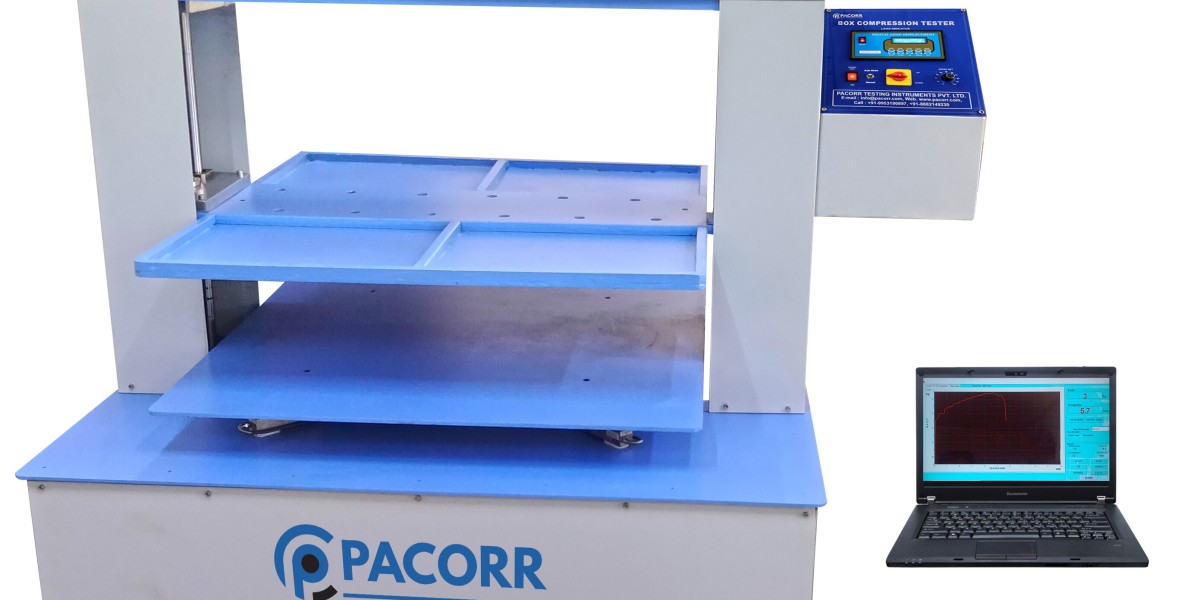What is a Box Compression Tester?
A Box Compression Tester is a machine designed to measure the compression strength of packaging materials, such as cardboard boxes and cartons. It applies a force to the specimen until a specific point of deformation or collapse, providing a quantitative measurement of its strength.
How does a Box Compression Tester work?
The Box Compression Tester typically works by placing the box or packaging material on the machine's platform. The machine then applies a downward force on the top of the box through a flat plate that moves downwards. The force is increased gradually until the box collapses or reaches the maximum force specified by the test. The machine records the peak force applied at the point of collapse or maximum resistance, which is the compression strength of the box.
Why is Box Compression Testing important?
Box Compression Tester is crucial for determining the durability and performance of packaging materials under pressure. It helps manufacturers ensure that their packaging can protect contents during storage, transportation, and handling. It also aids in optimizing packaging design by selecting the right materials and construction to meet strength requirements without excessive cost.
What factors can affect the results of a Box Compression Test?
Several factors can influence the outcomes of a Box Compression Test, including:
Material Quality: The type and quality of the cardboard or other packaging materials.
Box Design: The size, shape, and construction of the box, including fluting, joins, and reinforcements.
Humidity and Temperature: Environmental conditions can affect the material's properties and test results.
Load Distribution: How the force is applied and distributed across the box's surface.
Age of the Box: The strength of a box can decrease over time due to wear and environmental exposure.
How is the test data used?
Manufacturers use the data to improve packaging designs, select appropriate materials, and ensure compliance with industry standards. It also helps in determining the stacking strength for storage and transportation purposes.
Can a Box Compression Tester simulate real-world conditions?
Yes, many Box Compression Tester come with features that allow for simulation of real-world conditions. For example, they can adjust the speed of compression to mimic the slow increase in pressure that might occur in a stacked storage scenario. Additionally, environmental chambers can simulate temperature and humidity conditions to see how these factors affect box strength.
How do I choose the right Box Compression Tester?
Choosing the right Box Compression Tester depends on your specific needs, including:
Capacity: Ensure the machine can handle the maximum force levels you need to test.
Accuracy: Look for machines with high precision in force measurements.
Size and Weight Limitations: The tester should accommodate the sizes and weights of boxes you intend to test.
Features: Consider machines with features that match your testing requirements, such as data logging, programmable test parameters, and environmental condition simulations.
How do I interpret the results from a Box Compression Test?
The primary result from a Box Compression Tester is the maximum force the box can withstand before collapsing or reaching a predefined deformation point. This value, typically measured in pounds per square inch (psi) or kilonewtons (kN), indicates the box's compression strength. Comparing this value to the requirements for the box's intended use helps determine if the design and material are appropriate. Additionally, analyzing the mode of failure can provide insights into potential improvements in box design or material selection.
Conclusion
A Box Compression Tester is an indispensable tool in the packaging industry, providing invaluable data on the strength and durability of packaging materials. Understanding how it works and how to effectively utilize it can significantly contribute to enhancing product safety, compliance, and cost-efficiency. Whether you're a small business owner, a quality control specialist, or simply someone interested in the science of packaging, recognizing the importance of compression testing is key to ensuring that your products remain protected, from warehouse to customer.
Read more info:








